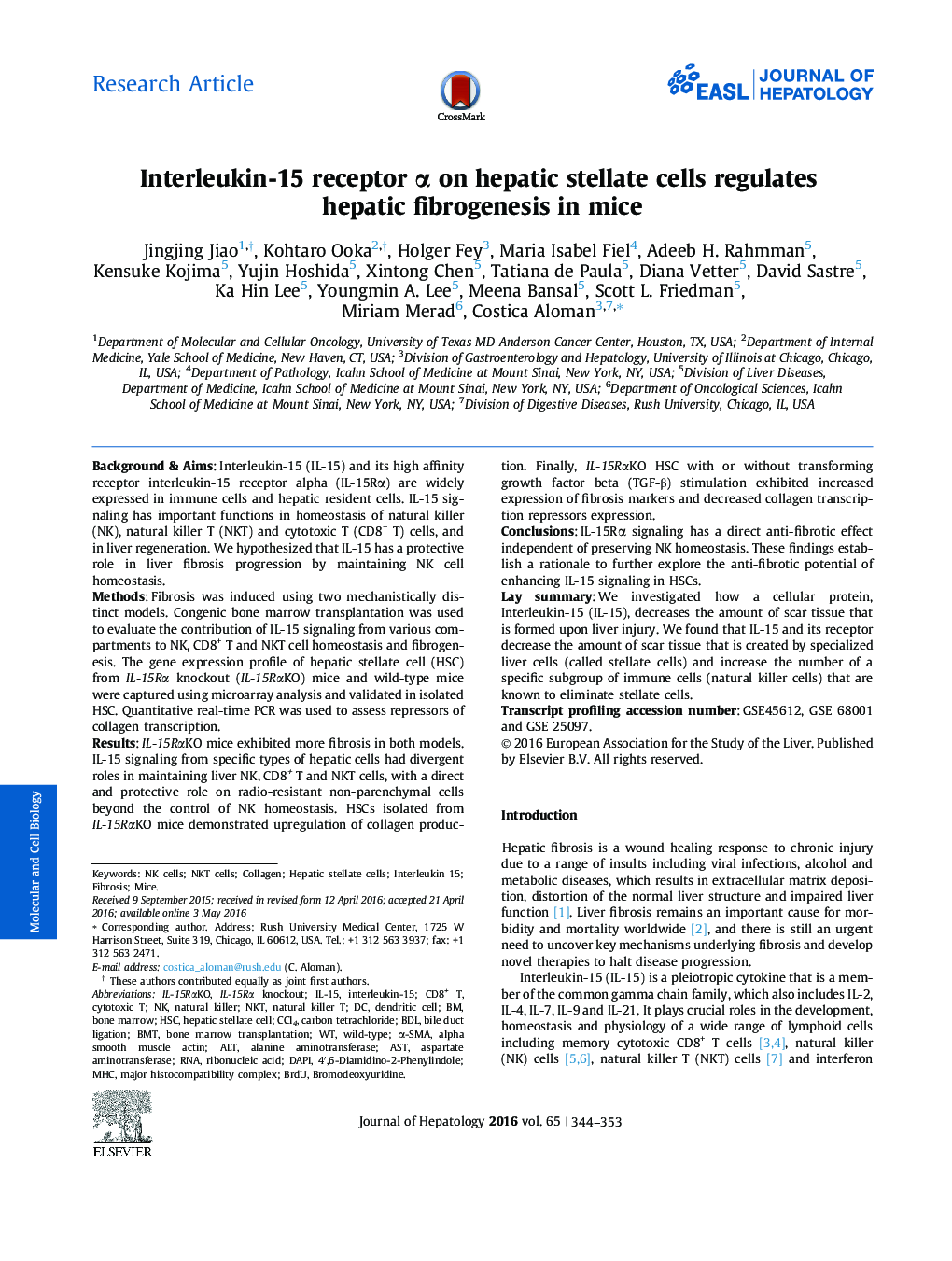| کد مقاله | کد نشریه | سال انتشار | مقاله انگلیسی | نسخه تمام متن |
|---|---|---|---|---|
| 3313573 | 1211103 | 2016 | 10 صفحه PDF | دانلود رایگان |

Background & AimsInterleukin-15 (IL-15) and its high affinity receptor interleukin-15 receptor alpha (IL-15Rα) are widely expressed in immune cells and hepatic resident cells. IL-15 signaling has important functions in homeostasis of natural killer (NK), natural killer T (NKT) and cytotoxic T (CD8+ T) cells, and in liver regeneration. We hypothesized that IL-15 has a protective role in liver fibrosis progression by maintaining NK cell homeostasis.MethodsFibrosis was induced using two mechanistically distinct models. Congenic bone marrow transplantation was used to evaluate the contribution of IL-15 signaling from various compartments to NK, CD8+ T and NKT cell homeostasis and fibrogenesis. The gene expression profile of hepatic stellate cell (HSC) from IL-15Rα knockout (IL-15RαKO) mice and wild-type mice were captured using microarray analysis and validated in isolated HSC. Quantitative real-time PCR was used to assess repressors of collagen transcription.ResultsIL-15RαKO mice exhibited more fibrosis in both models. IL-15 signaling from specific types of hepatic cells had divergent roles in maintaining liver NK, CD8+ T and NKT cells, with a direct and protective role on radio-resistant non-parenchymal cells beyond the control of NK homeostasis. HSCs isolated from IL-15RαKO mice demonstrated upregulation of collagen production. Finally, IL-15RαKO HSC with or without transforming growth factor beta (TGF-β) stimulation exhibited increased expression of fibrosis markers and decreased collagen transcription repressors expression.ConclusionsIL-15Rα signaling has a direct anti-fibrotic effect independent of preserving NK homeostasis. These findings establish a rationale to further explore the anti-fibrotic potential of enhancing IL-15 signaling in HSCs.Lay summaryWe investigated how a cellular protein, Interleukin-15 (IL-15), decreases the amount of scar tissue that is formed upon liver injury. We found that IL-15 and its receptor decrease the amount of scar tissue that is created by specialized liver cells (called stellate cells) and increase the number of a specific subgroup of immune cells (natural killer cells) that are known to eliminate stellate cells.Transcript profiling accession numberGSE45612, GSE 68001 and GSE 25097.
Figure optionsDownload high-quality image (90 K)Download as PowerPoint slide
Journal: Journal of Hepatology - Volume 65, Issue 2, August 2016, Pages 344–353